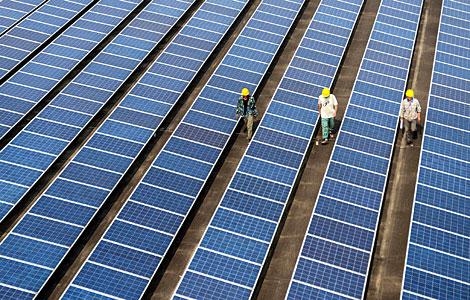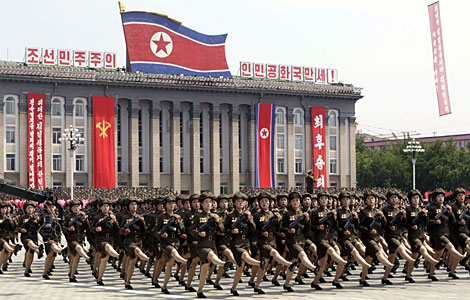Carbon market helps cut emissions
Updated: 2013-07-29 07:17
By Jiang Xueqing and Chen Hong (China Daily)
|
||||||||
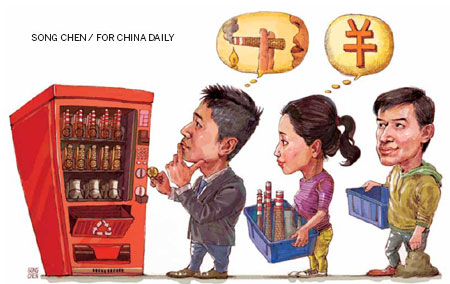
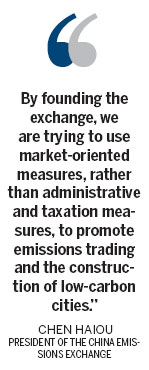
Substantial step taken to clean up environment and save energy, report Jiang Xueqing and Chen Hong in Shenzhen, Guangdong province.
On July 18, one month after China launched its first pilot carbon-trading program in Shenzhen, Guangdong province, the city began consulting local businesses and government departments about its draft regulations for the project. The regulations emphasize that carbon credits are corporate assets.
The launch ceremony of the Shenzhen Emissions Trading Scheme saw Shenzhen Energy Group sell 10,000 metric tons of carbon credits to PetroChina International Guangdong at 28 yuan ($4.60) per ton. Hanergy Holding Group also bought 10,000 tons at 30 yuan per ton. Both businesses purchased the credits for investment purposes.
"The launch of the carbon-trading market in Shenzhen demonstrates that China has taken a substantial step in reducing carbon emissions. Following Shenzhen, other carbon-trading pilots at provincial and city levels are making big strides," said Wu Delin, deputy secretary-general of the Shenzhen municipal government.
It has taken nearly three years to establish China's first pilot carbon-trading market. In July 2010, Shenzhen, seven other cities and five provinces were named the sites of China's first low-carbon program. The announcement by the National Development and Reform Commission was followed by the foundation of the China Emissions Exchange in Shenzhen two months later.
The move from low-carbon programs to carbon trading came in 2011, when the central government announced pilots in two provinces and five cities, including Shenzhen, Beijing and Shanghai. One year later, China's first regulations on the administration of carbon emissions were enacted by the Standing Committee of the Fifth People's Congress of Shenzhen Municipality.
Market-oriented measures
"By founding the exchange, we are trying to use market-oriented measures, rather than administrative and taxation measures, to promote emissions trading and the construction of low-carbon cities," said Chen Haiou, president of the China Emissions Exchange. "Three years ago, we didn't expect the government to make such great efforts to develop carbon trading at such a high pace."
A major target for carbon trading is to push the city forward in areas such as energy saving and emissions reduction, said Wu. Research conducted over recent years revealed that industrial enterprises, transport, buildings and waste disposal are responsible for most of Shenzhen's carbon dioxide emissions.
In the initial stages of the carbon-trading project, Shenzhen's municipal government put 635 manufacturers and 197 buildings, including shopping malls, hotels and office buildings, under carbon-emission management.
The companies are mostly large enterprises with high levels of emissions. Research carried out in the period 2009-11 found that in 2010 alone, these companies emitted 31.73 million tons of carbon dioxide, accounting for 38 percent of the 83.4 million tons of the city's carbon dioxide emissions. They also accounted for 59 percent of Shenzhen's total "industry value added" - its contribution to national GDP - and 26 percent of its own GDP.
By 2015, the city will cut carbon dioxide emissions per unit of GDP to 21 percent below the 2010 level, according to its low-carbon growth plan. However, because it's extremely difficult and expensive to reduce transport and residential emissions, the municipal government set a reduction target of 25 percent for industrial enterprises.
To that end, the government has allocated the 635 businesses more than 100 million tons of free carbon credits over the next three years, based on their previous emissions and industry value added. Companies that exceed their emissions quotas will be fined at a rate three times the average market price of the excess emissions.
Before they signed their quota agreements with the government, each participating company took part in the allocation process by assessing the potential for further reducing its carbon intensity and estimating its annual growth of industry value added in the period 2013 to 2015.
If a company has failed to cut carbon dioxide emissions per unit of GDP at the agreed rate a year after they signed their quota agreements, and its industry value added does not increase as quickly as estimated, the government will take back a proportion of its carbon credits accordingly.
Striking a balance
The use of adjustable carbon credits means Shenzhen will be able to balance allowance supply and demand and stabilize carbon prices, a lesson learned from the European Union's carbon-trading market.
In recent years, the price of EU carbon credits has fallen from more than 30 euros ($40) per ton to 5 euros. The price of carbon offsets, also known as certified emission reductions, slumped from more than 20 euros to around 50 euro cents.
The price decline has been caused, in part, by a recession in Europe, which led to a decrease in industrial output and, in turn, resulted in fewer emissions and an overabundance of allowances. Moreover, the EU allocated all its carbon credits simultaneously, thus making it impossible to reduce credits when the eurozone economy began to weaken.
Shenzhen can avoid similar problems by the adoption of adjustable credit allocation, said Xiao Ming, chairman of GDR Carbon, a consultancy specializing in carbon-asset management and investment.
Unlike in the EU, carbon trading is a new phenomenon for most Chinese companies, which regard carbon credits as a huge responsibility, one they have to adhere to by remaining within their emissions limits.
Since that first transaction at the China Emissions Exchange on June 18, a number of individual investors have opened accounts and expressed strong interest in buying emission allowances. The highest price listed is 33 yuan per ton, but so far no company has offered to sell its credits.
"Many companies have no idea of how much carbon dioxide they have emitted in the first half of 2013 and therefore dare not sell their emission allowances. Even if some of them have realized that carbon credits are corporate assets which can even be used as pledges for bank loans, they do not have a clear procedure for making investment decisions on carbon trading, nor do they have any information about the trend of domestic carbon prices because of a lack of long-term market research and analysis," said Ge Xing'an, vice-president of the China Emissions Exchange.
The companies are in no hurry to make decisions about when to buy or sell their carbon credits, the number of credits they should sell or the prices they should ask. They won't make those decisions until the first year of their contracts ends in June 2014, he added.
However, with limited emission allowances, the companies have already felt pressure to cut emissions and need to take advice from low-carbon consulting services, according to Xiao.
He said consultancies that specialize in carbon trading offer a variety of services that could help businesses improve their ability to monitor emissions sources and collect verifiable data. The consultancies can also help companies investigate their greenhouse gas emissions, reduce emissions by optimizing management, technology and corporate structures, exploit potential carbon assets, log accurate records of carbon assets and make a profit from carbon investment.
"Carbon trading is used as a tool to promote energy saving and the reduction of emissions," said Chen of the China Emissions Exchange. "During the process of developing the market, we will provide not only a trading platform but also a wide range of financial support to help businesses build their carbon management and trading systems."
For example, the exchange is planning to help a wind power company issue a 1 billion yuan bond in early September.
Futures and options
Because only carbon credits and Chinese certified emission reductions are tradable in China, experts and professionals have called on the central government to open the futures and options market as soon as possible.
"Without futures and options, it is hard to find long-term investment value in the carbon-trading market and the development and application of low-carbon technologies will be hindered by a lack of funding," said Xiao.
Ge pointed out that carbon credits can be problematic financially and the risks must be countered by risk-management tools, such as futures and options.
The China Emissions Exchange holds a training session once a week, where it provides training for participating companies and listens to their demands. The ultimate aim of the exchange's founders is to build a carbon-trading financial center in China.
"Cultivating the carbon-trading market in China will be a long process. We shouldn't pull at seedlings to help them grow, or dream of huge transaction volumes immediately. That's unrealistic. We've got a lot of work to do to build a solid foundation for the market," said Chen.
Contact the writer at jiangxueqing@chinadaily.com.cn
Wu Wencong also contributed to this story.

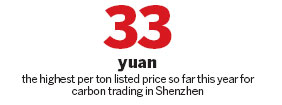

(China Daily USA 07/29/2013 page7)
Most Viewed
Editor's Picks
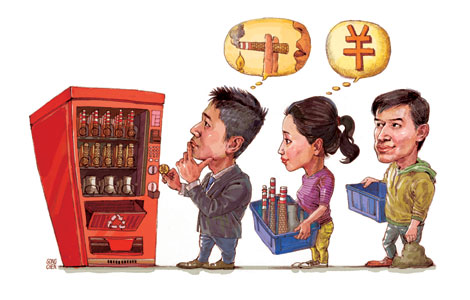
|

|

|

|

|

|
Today's Top News
Experts advise CEOs on how to make it in the US
Israeli-Palestinian peace talks to resume
Latest US-China talks should smooth the way
Audit targets local government debt
30 people killed in Italy coach accident
Brain drain may be world's worst
Industry cuts cloth to measure up to buyers' needs
Reckless projects undermine the prosperity hopes
US Weekly

|

|




